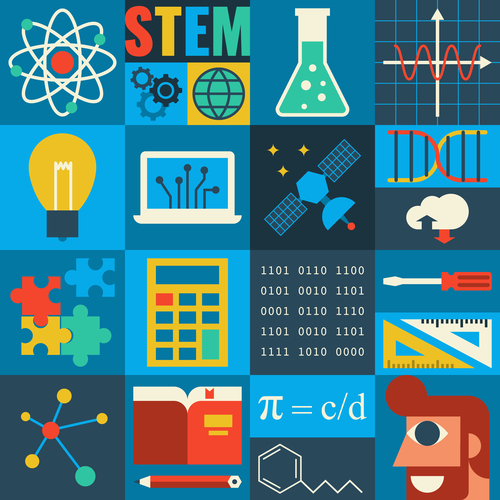
Why the “T” in Stem is So Important

STEM is an acronym for “Science, Technology, Engineering, and Math”. While each discipline is, in some sense, a standalone field, it can be argued that the “T” may be the best reference point by which STEM can be understood as being more than the sum of disparate parts. In fact, all STEM careers and innovations find their common thread in Technology.
1. Science – The most common blend of science and technology is found in physics or chemistry. However, applied modern sciences, including genetics, are increasingly relying on technologies to provide new information about century old processes. For example, the refinement of the Polymerase Chain Reaction (PCR) technique in the mid-1980s, which acts as a DNA replicator, was not invented in a vacuum. That is, with the rise of computer-aided technology in the 1980s coupled with progressive genetic insights, the first thermocycling machine, the rapid duplicator of the PCR technique, was born. With the capacity to create billions of DNA pieces at once, the thermocycling machine had tremendous implications for forensic science and the identification of genetic defects. While biotechnology has certainly made even greater strides within the last decade, the inception of the technology boom paired with scientific advancements proves that any developments within both the broad and narrow scopes of science cannot be disentangled from the influence of technology.
2. Engineering – The immediate impact of engineering as affected by technology can be easily observed in the gradually shortened timespans between the planning, construction, and finishing phases of producing corporate buildings, residential homes, and general infrastructure upgrades. Over the last 50 years, for example, the lifecycle of civil engineering has been radically transformed by e-mail, cell phones, and computer software, thereby making the entire lifecycle of planning a project and seeing it to fruition much shorter. The future of manufacturing is also being impacted by technology. Indeed, innovations in additive manufacturing and distributed manufacturing will enable engineers to make use of 3D and 4D printing to produce nano-scale computer parts, like processors, and maximize the production process by eliminating superfluous overhead found in centralized factories
3. Math – Perhaps sharing the most integrated relationship, math and technology cannot be understood as isolated endeavors. This premise is decidedly verifiable; tablets, smart boards, graphing calculators, and other media items are almost ubiquitous in nearly every academic setting. Of course, correlative trends in math and technology are not relatively new inventions. Even with the Abacus and Fraction Circles, for example, seemingly dated learning tools, evidence of quantitative learning by way of mass-produced manipulatives reveal that tactile learning has long been influenced by technology, however rudimentary.
The question of importance is central to this discussion. Why is it so important to recognize technology as being inherently connected to all aspects of STEM? Unfortunately, as cliché as this statement may be, even when thinking about STEM, it oftentimes easy to miss the forest for the trees. Recognizing the express impact that technology has on every STEM principle and invention will help students experience a more robust and meaningful education. Perhaps the universal question that every student has at some point, that is, “How will learning this (concept, application, unit) be relevant to my future decisions?”, can at least be partially satisfied by helping him or her see the tangible results produced by cross-disciplinary learning.
Written by Lindsay Reeves
Contact us today to learn more about how our tutors can help your child improve their mathematics skills!
Tag:engineering, math, science, technology



